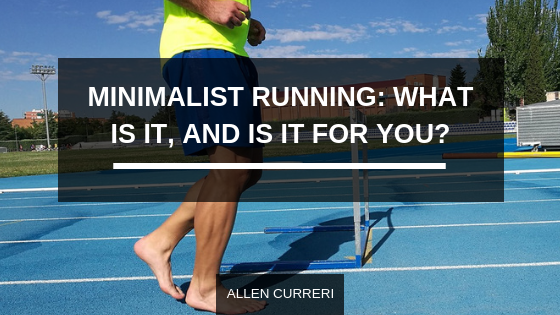Most new runners are advised to adhere to a crucial starting rule: find a shoe that works, based on your unique foot type, and stick to that shoe for as long as possible. This process, in many cases, involves a shoe that will provide the right level of support and cushioning to mitigate injury and discomfort.
Minimalist running, fundamentally, stands as the antithesis of the previous mindset; also called barefoot running, it broadly refers to running footwear that is thin, close fitting, and organic in the sense that is perhaps the closest one can get to running barefoot without actually doing so. Extreme as it may sound, minimalism has undulated as a running fad recent years, partially due to the popularity of Chris McDougall’s Born to Run, a memoir that aims to challenge our collective perceptions on what is “normal” in distance running, including the footwear we choose.
Today, there are several major shoe brands offering minimalist-inspired models, from Vibram to Saucony. However, despite its suggested benefits, it is important to understand that minimalism is not for everyone and must be pursued carefully to avoid frustrating setbacks.
That said, here are a few quick pros and cons to adopting minimalist running:
The potential benefits
- By running in minimalist shoes over a consistent period of time, one may be able to promote beneficial gait adaptations observed in successful runners worldwide. For example, many notable runners from third-world countries display a lower arch and, subsequently, a more stable foot as a result of regular barefoot running. Minimalism has been linked to similar changes that can improve a runner’s overall biomechanics.
- Additionally, minimalist shoes can lead to less bodily pressure experienced during long runs, as they promote a more natural heel strike with each step. Normal running shoes tend to encourage runners to adopt a heel-first stride, which can quickly accumulate pressure on the body over an extended period of time. This effect can also reduce the risk of certain injuries associated with the heel and sole.
The potential setbacks
- Even if it eventually works for you, minimalist footwear brings with it a slow, sometimes frustrating transitional process, which can quickly derail a training cycle or mileage building phase depending on when it is implemented. That said, it will take a lot of careful foresight and planning to adopt the footwear in a healthy, natural manner. As runners, we usually like to get back on the roads as quickly as possible when set back, so this notion alone can be a red flag, depending on the scenario.
- Minimalist running can lead to a specific variety of overuse injuries, mainly involving the achilles or calf, and it can exacerbate preexisting or recurring ones if the runner in question is simply a poor fit for such footwear. This setback is rooted in personal running style and body type, but in most cases it lies in the sudden shock of ramped up work for new muscle groups — ones that may have been worked differently with conventional shoes. Proper planning can reduce the risk of such injury, but just like the previous point, the primary setback here revolves around a potentially long trial-and-error process.

